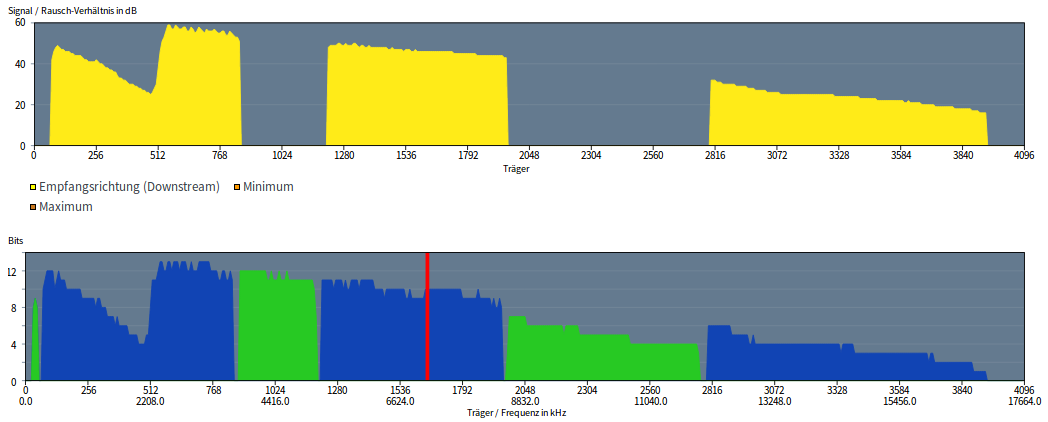One of the nice things of my Fritzbox DSL router is that it draws nice graphs of what is happening on my VDSL line. And one thing I find particularly puzzling in the top graph in the screenshot above is that the signal to noise ratio on the line starts at around 60 db and then quickly decreases down to only 20 db at around 2 MHz. After that it skyrockets again to 60 db and then expectedly degrades again slowly.
What I don’t understand is why there is such a significant dip at 2 MHz? And why is the SNR above 2.2 MHz higher than at the lower end of the spectrum? At first I thought that perhaps this is something particular to my line. But in the meantime I had a look at this graph on a few other routers connected to different lines, including to a line that is very short and thus should be almost ideal. In all cases that SNR dip at 2 MHz is present. Any idea why???

Bridged Tap? See section 4 here: http://www.analog.com/en/analog-dialogue/articles/vdsl-technology-issues-an-overview.html
Maybe there is something common in Telekom cabinets or cables that is causing this to occur frequently?
This takes me back to my Telecoms MSc. – Smith charts, line imperdances, ouch…
DPBO wegen VDSL / ADSL Mischbetrieb?
Hi Jan,
Yes, that seems to be it!
Here’s a link (in German) that goes into the details of DPBO (ADSL-Downstream Power Back Off) that I found after reading your comment: https://www.echoray.de/Archive/390.
In short: Transmit power in the frequency range up to around 2 MHz is reduced in the outdoor DSLAM to protect the (legacy) ADSL signals coming from the central exchange. These signals come from further away on other lines to other customers that go through the same cable bundle and have to be protected from cross talk of strong signals inserted at the outdoor DSLAM into other lines in the cable bundle. ‘Old’ ADSL only uses the frequency range up to around 2 MHz. Above that, power can be increased again.
Thanks for leaving a comment!
Martin